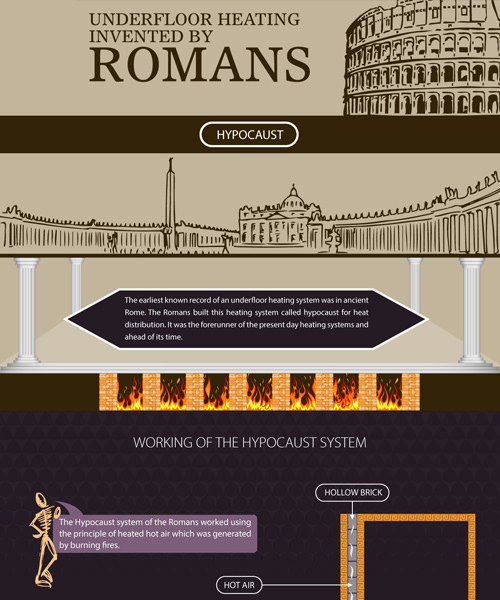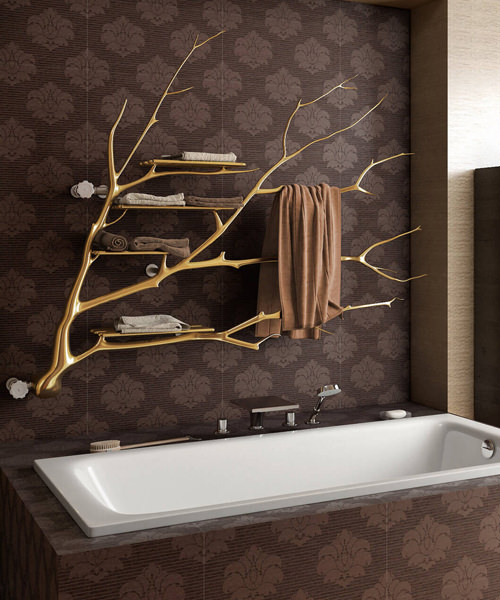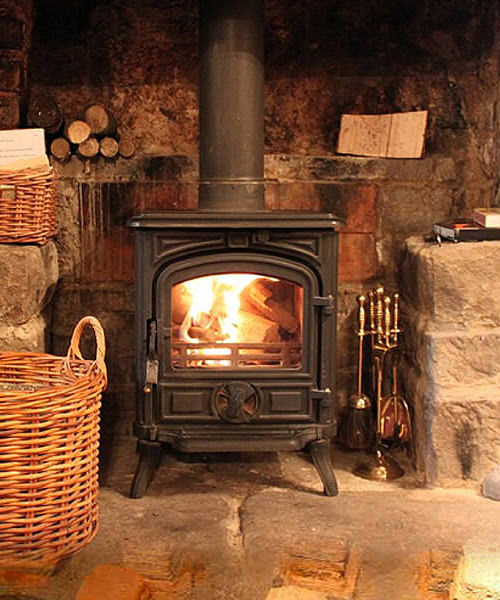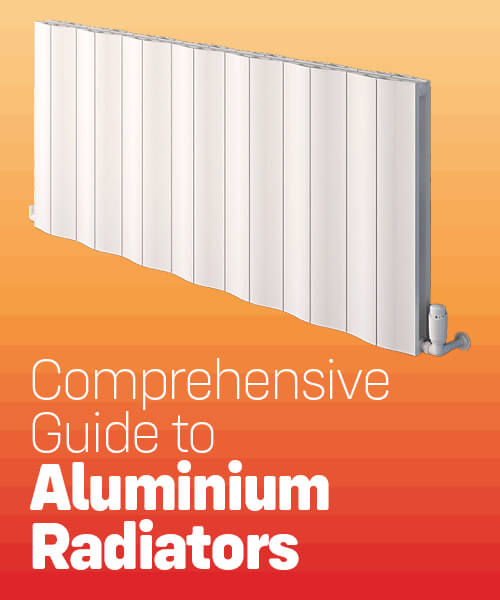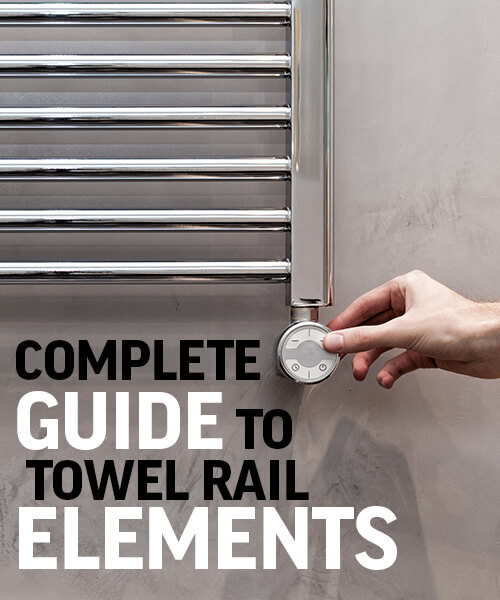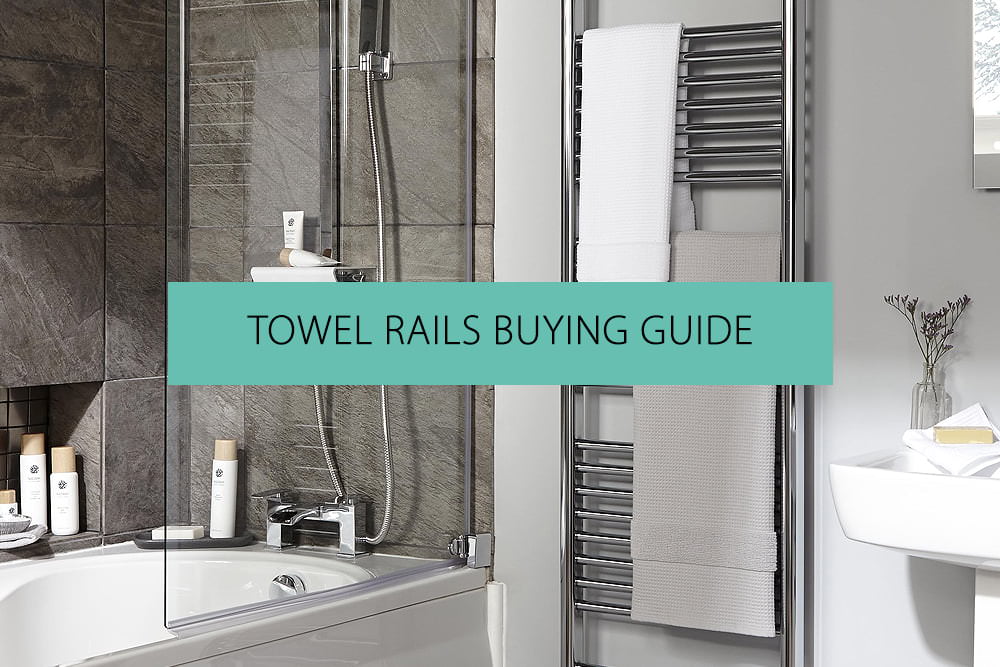
Modern-day electronic accessories can transform an ordinary-looking washroom into a luxurious space with style and functionality. One such popular accessory is the towel warmer, which offers a welcoming towel after a bath or shower. Towel warmers are appliances that ensure an unending supply of hot towels. As these units have become quite affordable over the years, consumers can now experience the comfort of a spa or an exotic hotel within their homes. These come in various sizes, shapes, and finishes and have different BTUs (British thermal units).
These units are crafted from high-quality stainless steel, aluminium, brass and other heat-efficient metals. If you are looking for a low-cost product, selecting an aluminium radiator would be an ideal choice. These require low water content and heat up quickly. Besides giving you a continuous supply of hot towels, these also warm up smaller bathrooms efficiently. Towel warmers, or rails come in many versions to meet various needs.
Old Vs New Styles
A wide range of styles are available to suit every preference, from old-fashioned and ornate to modern and minimalistic. With many towel rails on the market, this is a purely cosmetic choice, and they may also include the latest features, such as heating.
Straight Towel Rails

Straight Towel Rails display a ladder-like exterior with bars arranged next to each other in a classic vertical arrangement. These appliances are thus also called Ladder Rails. These appliances come in chrome or white, with black finishes quickly catching up. The polished shiny look of chrome remains the most popular, with stainless steel and polished stainless steel claiming their position as the more luxurious offerings.
Straight radiators sit snugly against the wall and don’t occupy much space. Most of these can be used with central heating, dual fuel or electricity. Straight towel rails can be purchased in differing lengths, enabling you to fit them in various locations. Some people opt for multiple rails, which allow a number of different towels to stay aired beautifully. Conversely, a single rail can be just the thing to hold a hand towel in the right place. For a cutting-edge contemporary accent, why not fit these of varying lengths?
Curved Towel Rails
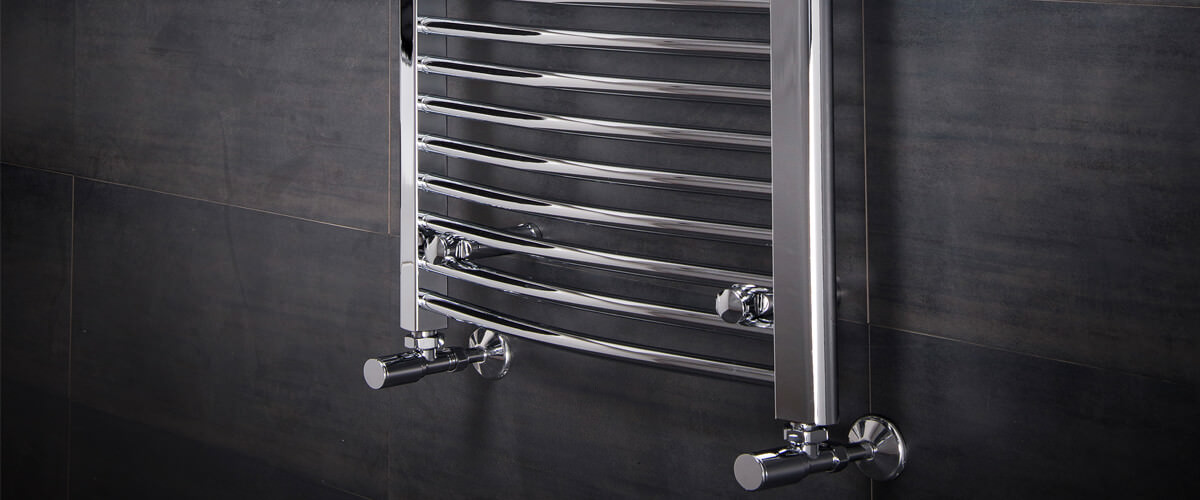
As the name implies, these types are similar in design to straight radiators, but the front curves slightly outward, giving it an elegant look. The design retains the basic ladder-like structure and performs all the functions similar to straight radiators. Chrome dazzles in this version as the most popular finish, while white, stainless steel and black finishes are also rapidly gaining ground. Check our range of Curved Towel Rails.
Traditional Towel Rails
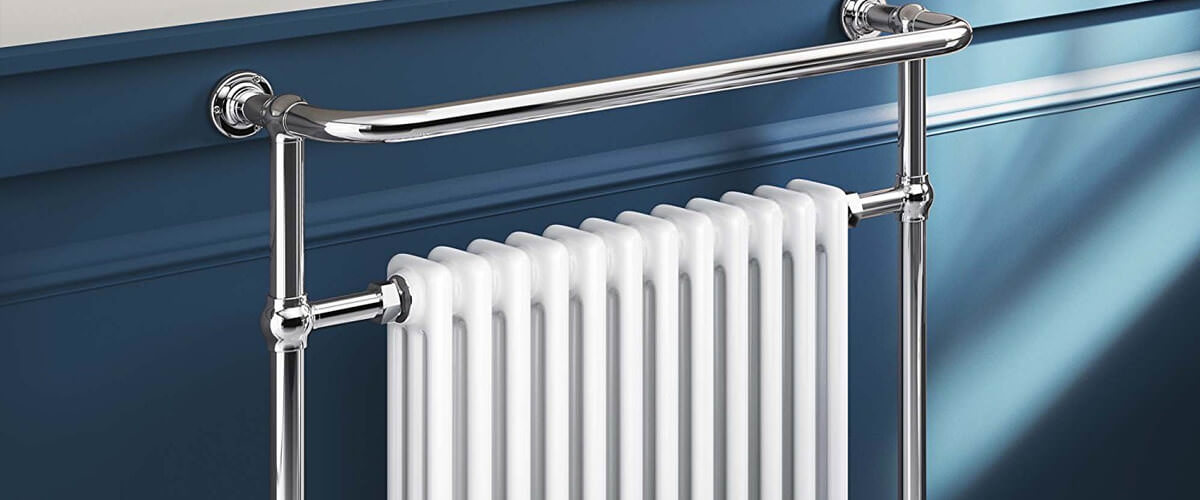
These are a wonderful amalgamation of old-school traditional design with modern-day heating technology. Efficient and aesthetically pleasing, these perfectly fit Victorian and Period style interiors. These are either mounted to the wall and floor in an L-shape format, wall-mounted or floor-mounted. Geared up to give you hot towels in a more historical setting, these are created for central heating systems as standard, but modern electric and dual fuel alternatives have emerged recently. Check out our range of Traditional Towel Rails.
Electric Towel Rails
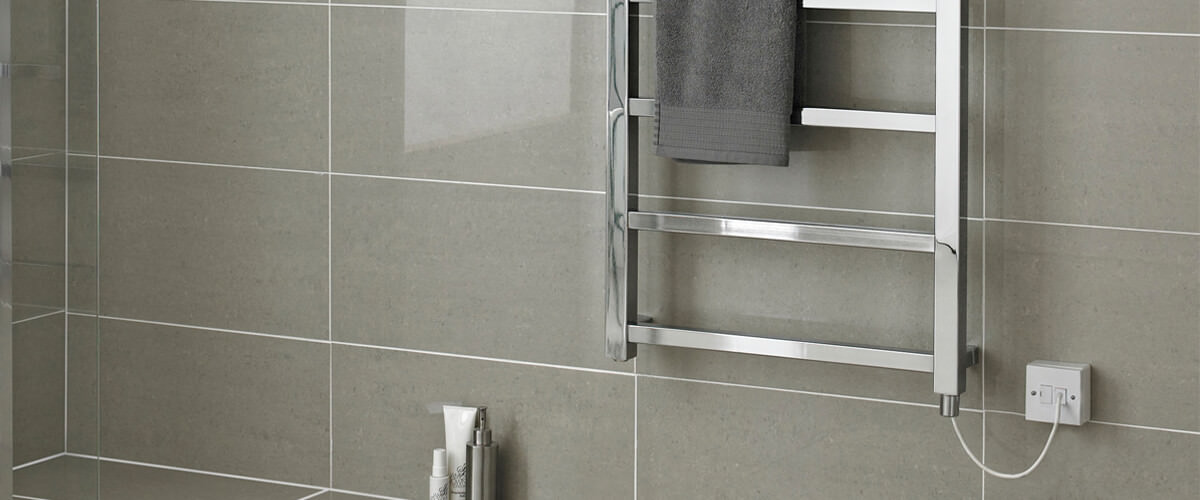
Electric towel rails represent a quick and easy way to bring heat to your bathrooms or kitchens.
They also provide a great way to dry and warm up towels for everyday bathroom use.
These run on electricity using special heating elements and can be used easily all year round. These may be wall mounted by a qualified electrician and can also be easily moved. Most of these come with standard on/off controls, but some are thermostatic in function. These allow you to pre-set the temperature, with some also offering anti-freeze functions. Heat is uniformly distributed over the surface, and it eliminates cold spots. Read our complete guide on Electric Towel Rails.
Other Methods of Towel Rack Heating
Homes with gas radiators installed can have them connected to the towel racks. Likewise, towel racks that utilise dual fuel radiators to heat them are also becoming increasingly popular.
Wall-mounted Swing Towel Bar
This innovative towel rack feature several individually swinging bars for draping towels over. They usually come in stainless steel and have sturdy wall mounting. They can be a useful and aesthetically pleasing alternative to the more traditional fixed horizontal towel rack.
Multipurpose Towel Rack
Multipurpose towel and shelf racks are helpful when you want to maximise space and functionality. It commonly adds a basic shelf above multiple rungs for hanging towels.
Coloured Towel Rails
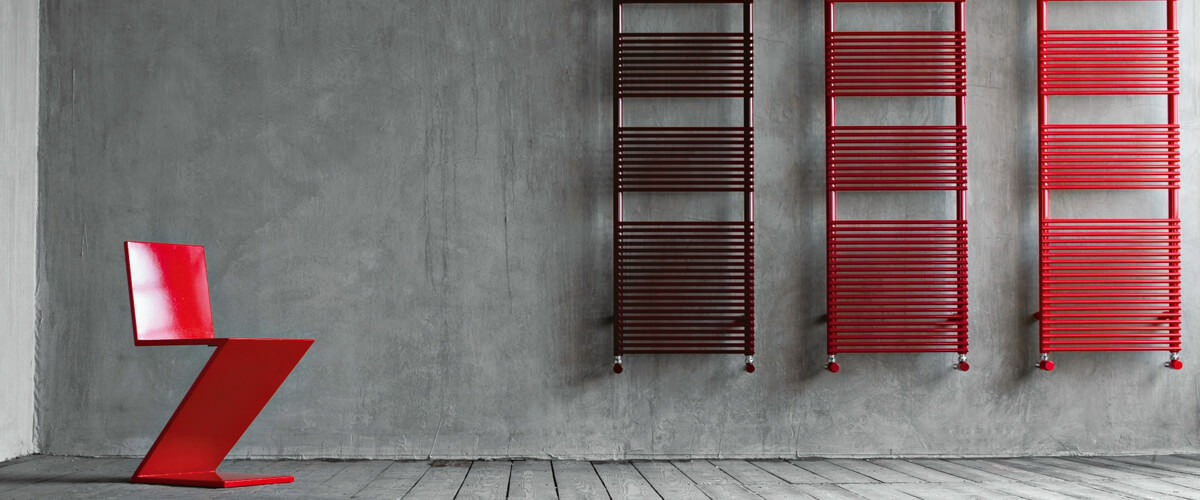
Today, users are experimenting with different hues in every part of the home, including the choice of towel rails. When we surround ourselves with our favourite colours, we are likely to feel more positive and energetic. These coloured towel warmers will blend perfectly with any decor and will fit vintage, traditional or the most modern style of furnishings. Coloured Radiators come in an assortment of colours, from greens and blues to vibrant reds. These brightly-hued beauties are efficient, aesthetically appealing and more fun than their classic counterparts.
Using a Curved over Straight Towel Rail
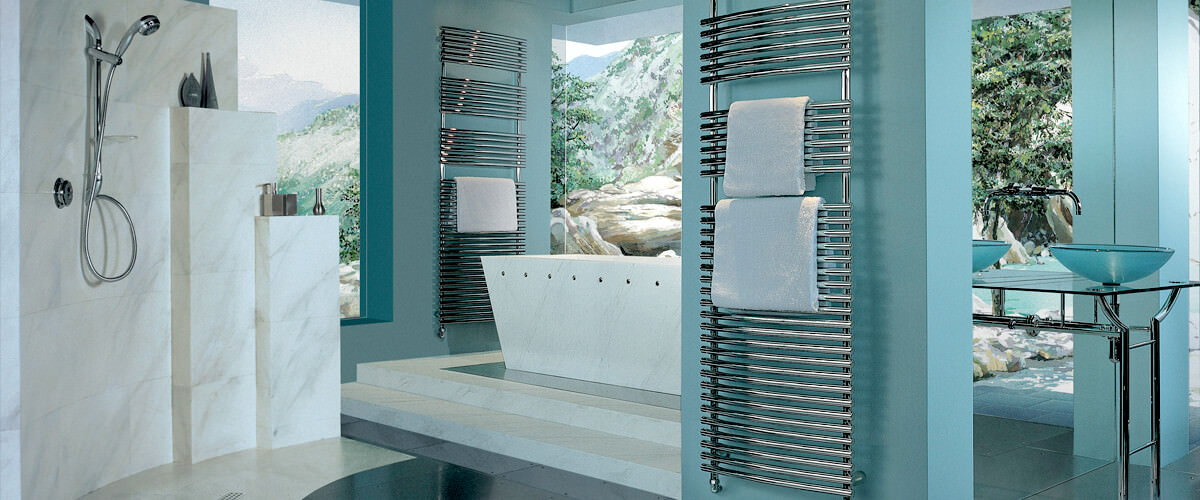
While there are not too many differences in using straight versus curved or other fancy radiators apart from the aesthetical factors, there are a few basic differences.
You will need to consider the following points before deciding on a particular style:
- Make sure to consider the size of the unit along with style. Typically, curved versions take up more space than straight ones.
- Curved versions present a larger surface area than straight ones. This means that for similarly sized units, the curved ones can offer better and faster heating.
- If considering a curved system, try opting for a stainless steel finish, which will offer better performance and durability.
Precautions to take at the time of installation
Whether you are getting your towel rails installed DIY, or by a professional, there are a few precautions that you will need to observe:
- For a wall-hung installation, make sure that the level at which the unit is assembled is accessible by all people using the bathroom. You will need to use toggle bolts for anchoring the rails securely onto walls. Ensure that the lowest bar on the unit lies at least 600 to 700mm off the ground.
- For floor-mounted and freestanding systems, you will need to determine the best position so that unit does not cause any obstruction and is also safe in the available bathroom space.
- Make sure to install these in such a location that prolonged contact is impossible.
- If you are going for an electric version, ensure that all electrical connections are secure. You will need to refer to the instruction manual provided by your manufacturer in detail.
- For publicly used bathrooms, these accessories must always have a warning sign next to them.
- It should be installed away from the shower area and water.
Also, heated units can be dangerous to children, and they must never be allowed to use them without adult supervision. Units will also need to be installed so that there is little risk of a child or a toddler getting hurt.
Get Professional Help
It is always a good idea to install these units by a professional, licensed and qualified plumber. While there are many products with DIY installation options, plumbers have the required expertise and knowledge to carry out the installation smoothly. With experience, a plumber can even evaluate a bathroom space and offer advice on the best possible methods of installation.
Materials
When buying a radiator or towel rail, an important factor is the radiator material. In general, radiators are made of cast iron, mild steel, stainless steel or aluminium. In the early days, cast iron was used for building radiators and is still popular with homeowners seeking a Victorian-themed decor. Panel radiators and designer radiators use mild steel as it is a low-cost, efficient alternative to stainless steel.
Advantages Of Stainless Steel
The best material for radiators is stainless steel as it has innumerable advantages like resistance against flaking, rusting or corrosion. Stainless Steel Radiators can be used with all plumbing systems, including open systems. Stainless Steel Rails are manufactured from 100% steel and offer a stylish, year-round solution for drying and warming up your towels. Towel Rail units are also available as battery-powered units, in addition to the plug-in electrical types. Battery-powered units feature extreme convenience when it comes to portability, and they are gaining popularity in the market.
Prices
Towel Rails comes with varying price tags to suit every budget. Prices at our online store start from cheaper than £50 for basic radiators and can go up to more than £500, for the more luxurious models. The good news is that if you are on a budget, you can easily buy a cheap one that will warm your bathroom up quite nicely.
If your bathroom is particularly small, then you may want to buy one that sits against a wall but can heat the entire room. You can get a perfectly good radiator for less than £120, which means you don’t have to spend more than £500 on one unless you want to.
Conclusion
While towel rails units offer a high level of comfort, they also provide many other benefits. For starters, these units are excellent in maintaining hygiene and preventing allergens or mildew from growing on a towel. Warm Towels can also help improve blood circulation and reduce stress in individuals. Larger units can also be used to heat a chilly bathroom during the winter. Over the years, they have steadily moved beyond the confines of a washroom space and find good use in kitchens, basements, bedrooms and high-humidity areas of the home.

